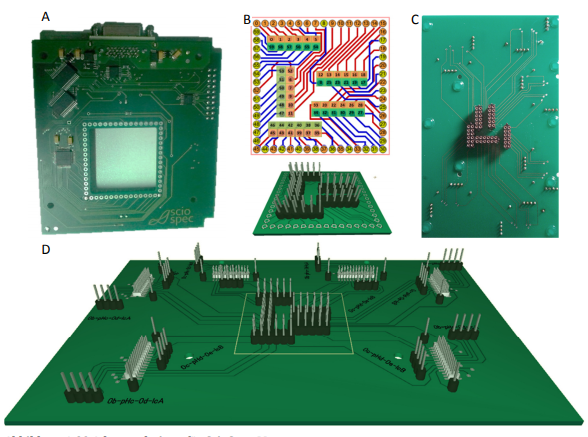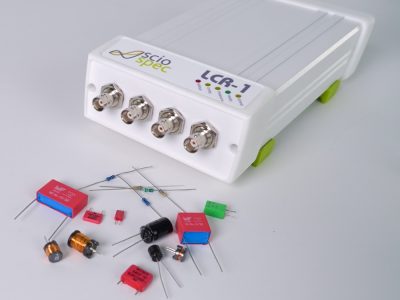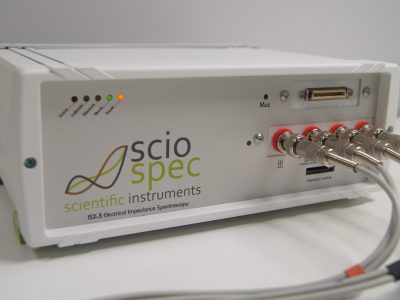Especially in the field of regenerative medicine, is limited by the complex structure of the bone itself. The microenvironment of the cells is widely unknown in the natural bone and at the interface of bone and implant materials. With the focus on bone like cells it is important to control oxygen and acidification as main metabolic parameters and to determine the cell reaction on parameter changes, to reach a better understanding of differentiation and the calcification process in bone and in vitro. A control of metabolic parameters and of the adhesion in 2D would highlight pathways for 3D cell culture and in vitro bone formation.
For this, the establishment of cell culture monitoring systems is essential because they allow for continuous and marker free measurement of metabolic parameters. This thesis presents the development of a cell culture monitoring system and its use in cell culture with MC3T3-cells. The developed system enables the use of electrical an optical sensors for the measurement of oxygen, pH and adhesion and the use in anaerobic experimental approaches. The development of the system included multiple iterations in fluidics, body and chip design to optimize the handling. The fluidics was simulated to decrease problems in the fluidics handling and bubble formation. The system body (carrier of the microfluidics) was optimized to enhance its experimental flexibility and handling properties. Furthermore a new production method, – the ultra-short pulse laser ablation – was implemented to decrease the time and costs of the sensor chip production. It could be shown that this technique is able to produce structures in platinum and ITO with a quality comparable to photo masks based photolithography. Further, it allows to overcome the size limitation of 4’’-wafer technology so that microscopic slides could be used as chip substrates. The platinum or ITO layers of such a chip could be processed between 3 minutes (platinum) and 30 s (ITO). Also the opening of windows in the passivation of the structures in Si3N4 with thicknesses of 100 nm to 1 µm was successful. On the sensor chips, the Si3N4-layer, previously used on ISFETs, was used as sensitive material in potentiometric pH-sensors the first time. Different layer thicknesses were compared with respect to their sensitivity and reproducibility. Sensitivities up to -53.8 ±1.8 mV/pH for the finally used, self-produced 60 nm layers, with maximum drift rates of 0.151 mV/h were found at room temperature. Because the amperometric oxygen sensors had no oxygen selective membrane, the sensors had to be characterized with respect to influences of the components in the cell culture medium. Cyclic voltammetry measurements proved that the cell culture medium contained no electro-active substances which influenced the measurements. Because of the material and the configuration, it was necessary to reduce the working potential to – 650 mV vs. Ag/AgCl-reference. A sensor sensitivity of 2.27 ±0.04 nA at 37 °C could be reached.
All sensors had been tested in cell culture to prove their stability, biocompatibility and
ability for the control of proliferating MC3T3 cells.
Development of cell culture systems with integrated sensors and actuators for monitoring of bone cell cultures



